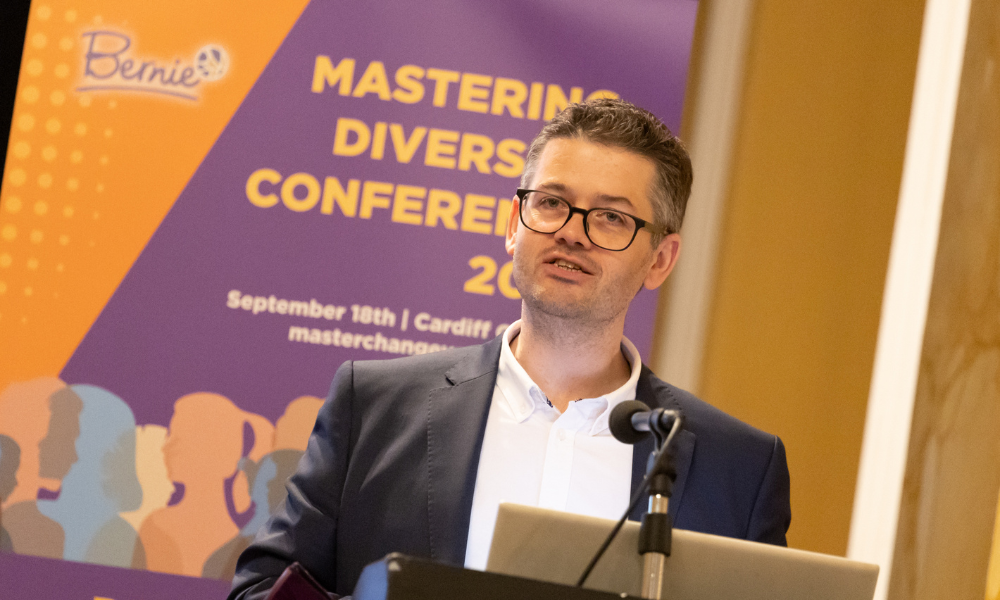Neurodivergent CEO argues the business case for supporting and implementing neurodivergent initiatives in the workplace, starting with management training

As Neurodiversity Awareness Month draws to a close, employers are increasingly marketing themselves as inclusive and supportive in efforts to successfully attract neurodivergent workers who are looking for spaces where they can fully be themselves.
Neurodivergent workers notably exist in every workplace. According to Talent Canada, there are about 600,000 neurodivergent adults in Canada, with other research finding approximately 15-20 per cent of the world’s population manifests a form of neurodivergence. That diversity can bring unique strengths and challenges to different individuals.
“People who are seeing that there's a welcoming place for them to work that seems to be supportive are also joining that organization or company,” said Rob Edwards, CEO of Neurodiversity & Entrepreneurship Association.
However, once inside, many employees find the reality does not match the promise.
“There's a call, based on the feedback that we've got, for better training and support for line managers,” he said. “In a lot of cases, we've had people who've been on performance management and have gone through that process.”
While many companies are making important strides in welcoming neurodivergent employees, he also warns that a serious gap remains in the support provided at the management level. While senior leadership often embraces neurodiversity initiatives, middle management is where the breakdown tends to happen.
The lack of proper training and support for managers often leaves neurodivergent staff feeling they must continue to mask their differences, despite expectations otherwise. Edwards explained the result is often in conflict with direct supervisors.
Many employees find themselves caught in performance management procedures, not because of poor capability, but due to misunderstandings and miscommunications that could have been avoided.
Edwards also pointed to traits like “black and white thinking” and “a real sense of justice”, particularly common among autistic individuals, as contributing factors to workplace tensions.
When neurodivergent employees see processes being handled unfairly or incorrectly, they are more likely to call it out. Without proper support structures, he said, this can escalate quickly into bigger conflicts with managers who are not equipped to respond appropriately.
He outlines several critical steps employers can take to support neurodivergent workers One being investing in comprehensive training. He believes this needs to go beyond surface-level awareness and should start with a solid understanding of how various conditions impact individuals in practical, day-to-day settings, particularly around often-overlooked effects of the physical work environment.
He pointed to issues like sensory overload, something as basic as harsh lighting or the hum of air conditioning, that can significantly affect concentration and engagement.
“The impact of having bright lights, even having noisy air conditioning, has a huge effect in terms of productivity,” he said.
For Edwards, open dialogue is key. He recommends creating tools like a “sensory passport” that allow employees to express what makes them comfortable and effective at work but also suggests that organizations must do more than just talk about support. They need the infrastructure to follow through.
“In a lot of cases, a lot of promises are made, but then lack resources to be able to put that into place properly,” he noted.
One-to-one mentoring is another area he sees as crucial. He believes employees need someone they can confide in, especially when navigating a new role or trying to advocate for specific needs.
He also urged HR professionals to rethink how they assess performance. Instead of jumping to conclusions, Edwards believes they should consider whether a worker’s challenges are rooted in neurodivergent traits that haven’t been identified or accommodated, underscoring a need to develop multiple communication methods - written, video, oral and in-person - to ensure information is accessible to different learning styles.
Edwards believes employers have a strong business case for actively supporting neurodivergent workers. He explained that many neurodivergent employees are exceptionally creative, often juggling “100 spinning plates at any one time in their head.”
While he emphasized that this group brings unique insights “who can see the gaps and opportunities” for a workplace that others might miss, he underscored that companies can only tap into this potential if they create environments where neurodivergent workers feel safe to be themselves.
“If there's a safe space and we can harness a lot of that creativity and that sort of resilience and bloody mindedness to get something over the line, particularly as the working world is so frantic and dynamic at the moment and looking for different solutions,” he said. “There's so many benefits of getting and supporting neurodivergent personnel within an organization.”
Edwards acknowledged that supporting neurodivergent staff comes with challenges but argued that meeting employees where they are is critical for maintaining productivity and controlling costs. From an employer’s perspective, it’s a smart investment, he said.
Employers who can focus on individual strength and provide opportunities for creative problem solving and innovation could ultimately retain their neurodivergent workers.
“If you can match those people with a real passion project that they're absolutely devoted to and passionate about, then I think that that gives you a competitive advantage,” he said, adding that neurodivergent thinkers often approach problems in nontraditional ways, giving companies access to new ideas and energy.
“Looking at things in a non-linear approach... that's where the innovation is going to lie.”



